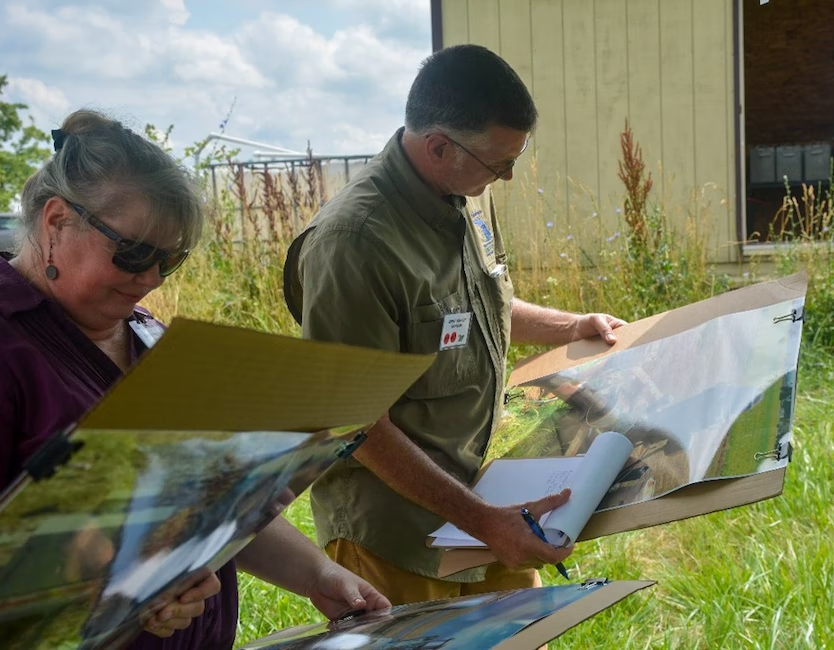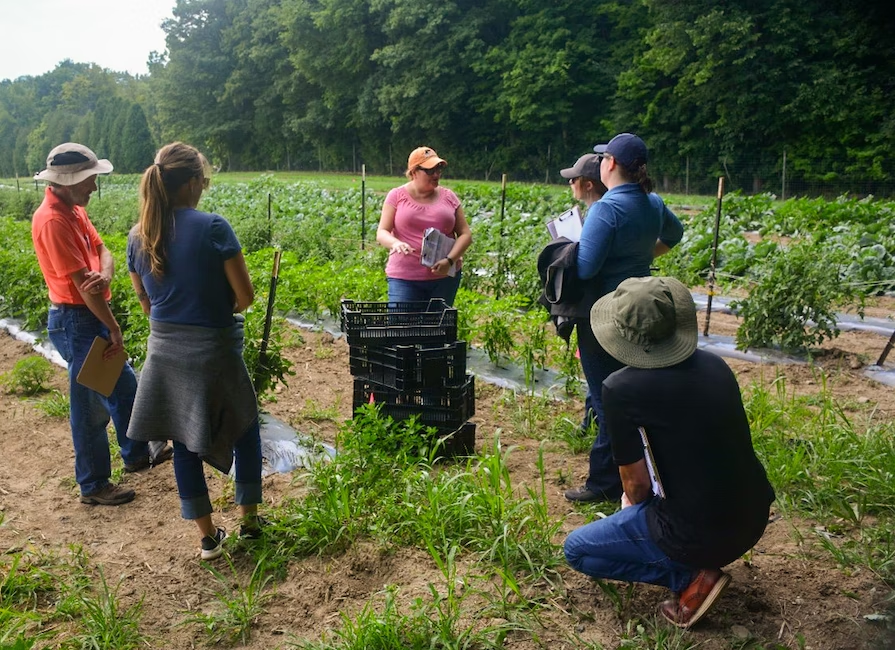Recently, NASDA hosted a significant training session at one of Michigan State University’s research farms. NASDA and its development team, made up of food safety and horticulture specialists from five land grant universities, instructed other state food safety, agricultural and extension specialists on not only how to spot food safety risks on the farm, but also how to communicate those risks to farmers.
Through the state produce safety programs that are cooperating with FDA to implement the Produce Safety Rule, farmers are offered a free, voluntary and confidential educational opportunity to invite a team of these state specialists to teach them how to meet the food safety standards required by the Food Safety Modernization Act’s Produce Safety Rule. NASDA developed this program and calls these educational opportunities, “On Farm Readiness Reviews (OFFRs).”
Oftentimes, one of the food safety specialists conducting On Farm Readiness Reviews is a state food safety inspector while another team member is a university extension specialist. Upholding the value of “education before regulation” and serving as teachers, they equip farmers with new skills to protect their produce from viruses and bacteria that cause foodborne illnesses.
For example, educators at the national OFRR training this month learned how to track, from the field to the packing house, where bacteria and viruses that can infect food may be coming in contact with produce. They also trained on how to assess good handwashing practices, water sanitation and potential food safety risks associated with wildlife droppings.
Contact Information
Most importantly, after identifying risk, the assessors were instructed on how to communicate with the farmer how many situations can impact food safety, options on how to resolve potential for contamination and how to prioritize risk management.
NASDA Senior Director of Food Safety Programs Joe Reardon shared the importance of communicating the “why” behind provisions in the Produce Safety Rule, rather than solely pointing out potential areas of risk.
“When you walk on to an American farm and you’re talking with the farmer, if you do that in a pure regulatory approach where you’re simply sharing what the rule says, the farmer respects those rules. They’re governed by many rules. But, if you’re able to then communicate the food safety risk behind [the rule] and help the farmer understand why that specific practice or process can have an elevated or lowered food safety risk, they can make the best decisions for their farm and determine how to best invest their resources,” Reardon said.
Produce farms that grow, pack or hold fruits and vegetables that are “generally consumed raw” are regulated by the Produce Safety Rule as of January 26, 2016. NASDA saw the importance of “education before regulation” and introduced the On Farm Readiness Review in 2018. Since then, approximately 2,000 individual farms have benefited from the educational reviews.
“At the end of the day our goal, like it is for the American farmer, is to produce safe food,” Reardon said.
If you or a farmer you know is interested in participating in a free and confidential On Farm Readiness Review, visit NASDA’s website for more information.


